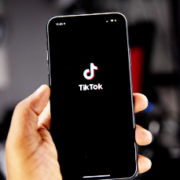By Prince Abubakar
Mobile marketing is the current trend for marketers, as we have seen over the past few years, how consumers have shifted from accessing the internet via desktop to mobile. This shift has prompted the need for a mobile-first strategy, and numerous brands have taken advantage of this trend for growth.
RELATED: 6 Costly yet avoidable digital marketing mistakes
Going mobile is not just about developing mobile apps for your brand. It entails developing the right strategy to engage the users and grow app downloads. And this is where developing a strategy becomes crucial to the success of your mobile marketing.
In this post, we’ll talk about the components that come into play when you’re designing a mobile marketing strategy for your business.
- Define Your Goals: The first step is to figure out your goal, and what you want to do with your mobile marketing efforts, such as increasing app downloads, driving user engagement, or boosting sales.
- Know Your Audience: Understand your target audience’s preferences, behaviours, and demographics. This information helps tailor your marketing messages and tactics to resonate with them.
- Optimize for Mobile: Ensure your website, landing pages, and emails are mobile-responsive and user-friendly to provide a seamless experience across devices.
- App Store Optimization (ASO): Optimize your app’s name, description, keywords, and visuals on app stores to improve its visibility and discoverability.
- In-App Marketing: Use in-app messages, notifications, and prompts to engage users, highlight new features, and encourage actions.
- Mobile Advertising: Utilize mobile ads on platforms like social media, Google Ads, programmatic ads and in-app networks to reach your target audience.
- Social Media: Develop a strong presence on social media platforms that your target audience frequents. Share valuable content, engage with users, and run targeted ad campaigns.
- Content Marketing: Create mobile-friendly content such as blog posts, videos, or infographics that provide value to your audience and showcase your expertise.
- Email Marketing: Craft mobile-responsive email campaigns with compelling subject lines, concise content, and clear calls to action.
- Location-Based Marketing: Leverage geolocation data to send personalized offers, notifications, or promotions based on a user’s location.
- Mobile Wallet and Loyalty Programs: Implement mobile wallet offers and loyalty programs to incentivize repeat business and engagement.
- User Reviews and Ratings: Encourage satisfied users to leave positive reviews and ratings on app stores, as these can influence new users’ decisions.
- Data Analytics: Regularly analyze your mobile marketing efforts using tools like Google Analytics, app analytics, and social media insights. Use the data to optimize your strategy over time.
- A/B Testing: Experiment with different approaches, messages, and visuals to identify what resonates best with your audience.
- User Feedback: Alway collect and incorporate user feedback to improve your app and refine your marketing strategies.
Remember, the mobile landscape is dynamic, so continuously monitoring the latest trends and incorporating them into your strategy to stay relevant is the recipe for long-term success.
Do you want to develop a strategy for your business? Feel free to drop a note, and we’ll be happy to help.

































